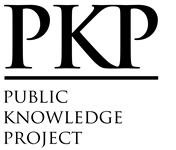Removal of Organic Compounds Using Improved Wetland Systems for Wastewater Reuse As an Example of Local Sustainable Water Management
Abstract
This paper discusses the efficiency of the removal of organic compounds using Improved Wetland System (IWS). IWS is used in Poland and enables reuse of treated effluent in landscape irrigation and toilet flushing. The first section of this paper discusses the advisability of removing organic compounds at the highest level. Additionally, the first section discusses the increase in frequency of treated wastewater reuse. So far, reuse of treated wastewater in local wastewater treatment systems included treatment and reuse of graywater only. The second section of this paper presents the average concentrations of organic compounds in domestic wastewater and the relationship existing between concentration of organic compounds in raw wastewater and water consumption. The second section discusses requirements for local (to 2000 population equivalent) wastewater treatment systems relating to reduction of organic compounds. The third section presents the current situation in rural areas in Poland and indicates the necessity of treated wastewater reuse mainly in these places. In Poland 43 % of the overall population occupies rural areas and about 70 % of them are not connected to a wastewater network. Implementation of water reuse technology (mainly IWS) is the easiest and the cheapest in rural areas. The fourth section presents the principle and the construction of the Improved Wetland System with water reuse. This part shows defects of Constructed Wetlands hindering reuse of treated wastewater. Additionally, this section discusses different steps and efficiency of wastewater treatment. The fifth section discusses results of removing organic compounds depending on hydraulic and contaminant loads. In addition, this section presents guidance on designing the IWS with technology that enables water reuse for flushing toilets and landscape irrigation. The last part of this paper discusses the summary and economic aspects of IWS used in Poland. In addition, the last part shows existing IWS objects in Poland which provides water reuse to flushing toilets, landscape irrigation and for retention and recreational uses.
Full Text:
PDFDOI: https://doi.org/10.5296/emsd.v5i2.10357
Refbacks
- There are currently no refbacks.
Copyright (c) 2016 Wojciech Halicki, Katarzyna Kita

This work is licensed under a Creative Commons Attribution 4.0 International License.
Environmental Management and Sustainable Development ISSN 2164-7682
Copyright © Macrothink Institute
To make sure that you can receive messages from us, please add the 'macrothink.org' domain to your e-mail 'safe list'. If you do not receive e-mail in your 'inbox', check your 'bulk mail' or 'junk mail' folders.
------------------------------------------------------------------------------------------------------------------------------------------------------------------------
